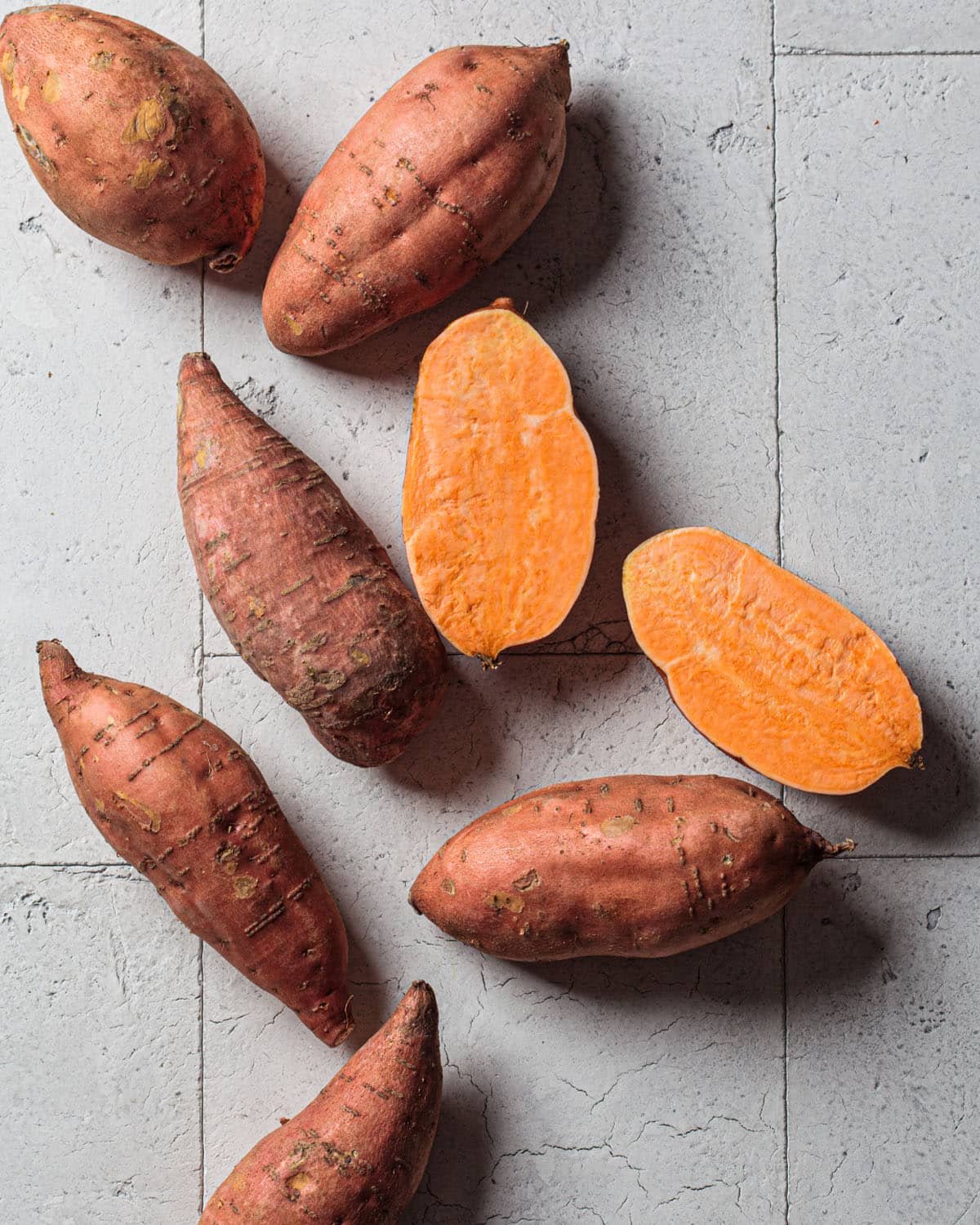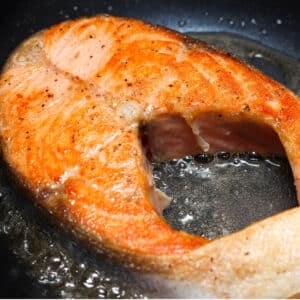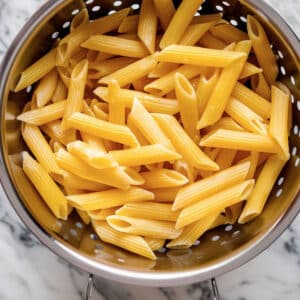Have you ever tried to cut a sweet potato? If you have, then you know that it's not easy. It can be downright tricky. Why are sweet potatoes so hard to cut? The answer has to do with their odd shape and tough skin. But don't worry – I'm here to show you how to cut a sweet potato like a pro. In this blog post, I'll share tips on making slicing sweet potatoes a breeze.

Why are sweet potatoes so hard to cut?
One of the reasons why sweet potatoes can be difficult to cut is because they have a lot of starch in them. This starch makes them harder to cut through than other vegetables. Another reason why sweet potatoes can be difficult to cut is that they have tough skin. You will need to use a sharp knife to make sure you can get through the skin without too much trouble.
1 Sweet potato has a very high sugar content.
The blades of your knife are more likely to get gummed up and stuck. This makes them much more difficult to cut than other vegetables. When you cut into a sweet potato, the natural sugars in the vegetable mix with the moisture and create a sticky substance, it's the same reason why cutting into a raw apple or pear will cause your knife to get sticky.
The natural sugar in sweet potatoes is called sucrose. Sucrose is a disaccharide of two sugar molecules: glucose and fructose.
When you cut into a sweet potato, the blades of your knife come in contact with the sucrose molecules and start to break them down. This process is called hydrolysis, and it creates smaller sugar molecules like glucose and fructose.
The smaller sugar molecules are more soluble than sucrose, so they dissolve more easily in water.
That's why when you cut into a sweet potato, the surface of the potato turns sticky – it's because the sucrose molecules have been broken down into smaller, more soluble molecules.
2 Sweet potatoes are very dense.
The sweet potato is a starchy, tuberous root vegetable; they're not as light and fluffy as other vegetables like potatoes or carrots. This denseness makes cutting them more challenging, primarily if you use a dull knife.
What makes sweet potatoes dense?
The denseness of sweet potatoes is due to the high amount of starch they contain. Starch is a type of carbohydrate that is found in many vegetables and fruits. When sweet potatoes are cooked, the starch breaks down and becomes soft. However, when raw, the starch molecules remain intact, making the sweet potato very dense.
How to make cutting sweet potatoes easier
Fortunately, you can do a few things to make cutting sweet potatoes easier.
1 Make sure you're using a sharp knife.
Cutting through the dense sweet potato with a dull knife will be much harder. A sharp knife will make a cleaner cut through the sweet potato, making it less likely to slip or get stuck. The sharp knife can provide a clean cut with less drag on the blade so that it can glide through the sweet potato more easily.
If you don't have a sharp knife, you can try using a serrated knife or a vegetable peeler.
2 Microwave the sweet potato before cutting it.
If you're having trouble cutting the sweet potato, try microwaving it for a minute or two before cutting. This will help to soften the sweet potato and make it easier to cut.
The heat from the microwave helps to break down the cell walls in the sweet potato. This makes cutting through the sweet potato easier since you're not fighting against the cell walls as much.
Be careful when microwaving sweet potatoes, as they can become very hot. Cut them open carefully and allow them to cool before handling them further.
3 Cut the sweet potato in half before cutting it into slices.
If you're having trouble cutting the sweet potato into thin slices, try cutting it in half first. This will make the sweet potato easier to handle and will also give you a flat surface to work with. Once you have cut the sweet potato in half, you can slice it into thin pieces more easily.
Another benefit of cutting the sweet potato in half is that it will cook more evenly. When you cut the sweet potato into slices, some parts will be thicker than others. This can lead to uneven cooking, where the thinner parts are overcooked and the thicker parts are undercooked. Cutting the sweet potato in half ensures that all the pieces are roughly identical and cook more evenly.
4 Parboiling before cutting
Another option to make cutting sweet potatoes easier is to parboil them before you even start cutting. This means boiling the sweet potatoes in water for a few minutes until they are partially cooked. You can remove them from the water, allow them to cool slightly, and proceed with cutting them however you need to.
This method works well if you need to cut the sweet potatoes into thicker slices or if you need to cut them into uniform pieces. Parboiling helps to make the sweet potatoes more pliable and easier to cut into the desired shapes. It also helps prevent sweet potatoes from drying out as you cut them.
How to parboil sweet potatoes:
1. Fill a pot with water and bring it to a boil.
2. Add the sweet potatoes and let them cook for 4 to 5 minutes. Do not boil until they are soft. You'll want the sweet potatoes to be partially cooked but firm when poking a knife into them.
3. Remove the sweet potatoes from the water and allow them to cool slightly.
4. Proceed with cutting them into the desired shapes.
Note: Remember that parboiling will make the sweet potato softer, so it may not hold its shape well when you cut it. Parboiling may not be the best option if you're looking for crisp, sweet potato slices.
Different cuts of sweet potatoes, and how to use them?
There are many different ways to cut sweet potatoes, depending on how you want to use them. For example, if you make roasted sweet potatoes, you will want to cut them into uniform pieces, so they cook evenly. If you are making mashed sweet potatoes, you may want to cut them into larger pieces to make them easier to mash.
1 Wedge:
Cut the sweet potato half lengthwise, then slice each half into wedges. This is a good cut for roasted or baked sweet potatoes.
2 Cubes:
Cubes are the most versatile cut for sweet potatoes and can be used for roasting, baking, or in soups or stews. They can go from salad to soup, and best of all, they cook evenly.
Cubes are the best to use for mashed sweet potatoes. To cube sweet potato, first, cut it in half lengthwise. Then, cut each half into 1-inch thick slices. Finally, cut the slices into 1-inch cubes.
3 Slices:
There are two types of slices: rounds and steaks. Rounds are perfect for making roasted sweet potato chips and eating on their own as a snack.
Steaks are suitable for grilling, baking, or frying. To make steaks, cut the sweet potato lengthwise into 1-inch thick slices. To make rounds, simply slice the sweet potato into thin rounds. They are ideal for roasting, grilling, or sauteing.
4 Julienne:
This is a fancy saying, "cut into thin strips." To do this, first cut the sweet potato into slices, then stack the slices and cut them into thin strips. Julienne cuts are good for stir-fries or salads.
5 Matchsticks:
Matchsticks are good for stir-fries or salads. To make matchsticks, cut the sweet potato into slices, stack them, and cut them into thin strips. This is similar to the julienne cut, but the strips are even thinner.
How to cut sweet potatoes
Now, we need to learn how to cut sweet potatoes correctly. They can be tricky little buggers to cut, but with a few simple tips, you should be able to do it like a pro!
Here are a few tips on cutting sweet potatoes:
1 First, you should clean the sweet potatoes.
You can do this by scrubbing them under cold running water. Or you can place them in a colander beneath running water and scrub them with a brush. This will help to remove any dirt or debris that might be on the surface of the potato.
2 Peel them.
This step is optional, but many prefer peeling their sweet potatoes before cutting them into pieces. You can use a vegetable peeler, a paring knife, or even a sharp spoon to remove the skin.
Once you've peeled the sweet potatoes, it's time to start cutting them into pieces. Depending on how you plan to use them, you can cut them into slices, cubes, or even wedges.
Start by slicing the sweet potato in half lengthwise if you're cutting them into slices. Then, cut each half into thin slices.
3 How to cut sweet potatoes into fries
Cutting sweet potatoes into fries is not as difficult as it may seem. With a little practice, you'll be able to do it like a pro!
Step one:
First, you'll need to gather your supplies. You'll need a sharp knife, a cutting board, and some sweet potatoes. Ensure the sweet potatoes are fresh - they'll be easier to cut if they're not too soft.
Step two:
Next, wash the sweet potatoes and dry them off. Cut off each end of the sweet potatoes, then slice them in half lengthwise.
Step three:
After slicing the sweet potatoes in half, cut them into thin strips. The thickness is up to you, but remember that thinner fries will cook faster.
Step four:
Now it's time to start cutting the fries! Start by cutting each strip into small pieces, then cutting those pieces into fries. Cut them all roughly the same size so they'll cook evenly.
Step five:
Once the fries are cut, it's time to cook them! You can bake them or fry them - both methods will work well. Preheat the oven to 400 degrees Fahrenheit if you're baking them, and line a baking sheet with foil. Spread the fries on the baking sheet and bake for 20-25 minutes or until they're crispy.
Heat some oil in a large skillet over medium heat if you're frying them. Once the oil is hot, add the fries and cook for 5-7 minutes or until they're golden brown and crispy. Drain on a paper towel-lined plate and serve!
4 How to cut sweet potato into cubes
Cutting sweet potatoes into cubes is not as difficult as it may seem. With a little practice, you can do it like a pro!
Step one:
Start with a clean, dry sweet potato. Cut off any bad spots or blemishes.
Step two:
Cut the sweet potato in half, lengthwise.
Step three:
Cut each sweet potato half into thirds, lengthwise.
Step four:
Slice each of the long sweet potato strips into small cubes.
Step five:
If your sweet potatoes are too big or too small, you can always adjust the size of your cubes by slicing them thinner or thicker.




